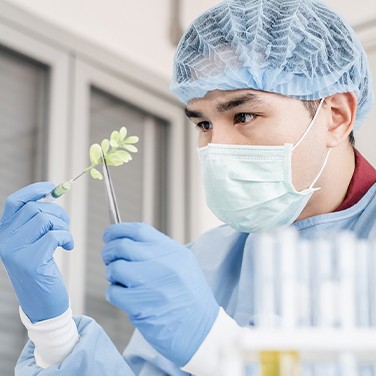Addressing Classroom Safety Concerns During the Pandemic
By Kylie Wolfe
To keep both students and staff safe, many universities turned to virtual learning this past year. Professors adapted their curriculum to help students get the most from each lesson while changing the way in-person science classes, including chemistry and biology labs, were offered.
Science courses typically require hands-on learning in the form of experiments and demonstrations. Not only do students learn valuable skills, like pipetting and problem solving, they also gain knowledge of lab safety techniques. With the obvious health and safety hurdles resulting from COVID-19, it was necessary for universities to find the right combination of in-person and online education.
Educating from a Distance
At the beginning of the pandemic, some college campuses went completely remote, but the 2020 school year brought about a hybrid model for many. Lab sizes were reduced and social distancing measures were put in place. Yale University installed clear dividers between lab benches for students attending in person and offered live video sessions for students participating online.
“In addition to limiting the number of live participants, we have rearranged our spaces, purchased additional equipment and reorganized our routines in order to minimize foot traffic, limit or eliminate sharing of equipment and maintain social distance at all times,” Christine DiMeglio, organic chemistry lab professor at Yale, told Yale Daily News.
"It was important to keep students safe while giving them a chance to learn in person as often as possible."
Labs were well ventilated and staff disinfected surfaces regularly. They understood that online learning may not always be the best option, especially when it’s hard to recreate hands-on experiments that require a physical lab space. It was important to keep students safe while giving them a chance to learn in person as often as possible.
At the University of Pittsburgh, biology labs were limited to six students at a time. Chemistry labs also had reduced capacities and some physics labs were conducted at home. One approach paired an in-person student with an online student who could watch the experiment live over Zoom, regulating attendance in the classroom. This unique learning environment gave students flexibility while adhering to safety guidelines.
Protecting the Campus Community
Establishing proper protocols was necessary for laboratory courses as well as university research facilities. While some labs had shut down completely last year, others ramped up to help with COVID-19 studies. For Environmental Health and Radiation Safety (EHRS) offices, this was a time to act, managing traditional responsibilities alongside new obligations.
To bring students back to campus safely, EHRS offices played an essential role. At the University of Pennsylvania, the EHRS team helped educate and support students, staff, and the community. They led the on-campus contact tracing effort, reviewed safety plans, and installed signs and sanitization stations.
“When you get a lot of information and individuals are not used to dealing with certain terminology or approaches, that’s where we step in: To try to facilitate understanding, provide resources, and enable them to do what they need to do in short order and to help somebody get their job done,” said Andrew Maksymowych, associate director of biosafety at the University of Pennsylvania, in an interview with Penn Today.
Through consistent communication, COVID-19 safety sweeps, and overall compliance, the team helped the campus reopen. As the pandemic evolves and universities plan for the next school year, safety standards and new ways of holding lectures and labs will already be a tool in their toolbox. The ultimate goal will continue to be finding a balance between safety and education for students and staff.
Kylie Wolfe is a Thermo Fisher Scientific staff writer.
This content was inspired, in part, by "From PPE to lab safety, supporting the campus community is a full-time job," Penn Today, December 18, 2020; "COVID-19 brings a wave of change to in-person lab courses," Yale Daily News, September 11, 2020; and "Students adjust to new online science lab structure," The Pitt News, January 27, 2021.



